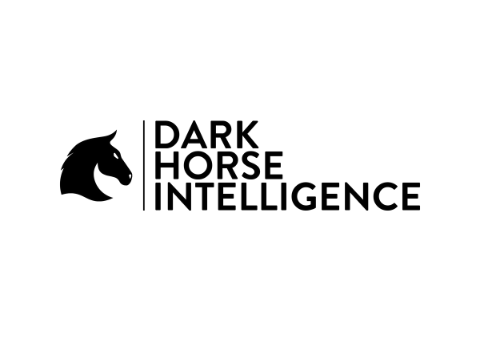

Fraud does not limit itself to any particular business, it impacts all industries. While technology is improving and businesses are leveraging increasingly sophisticated fraud prevention methods, fraud is still on the rise. In early 2020 the world shifted to a more remote, online environment and with that shift, came a 7% increase in fraud in the United States.
For banks and financial institutions, just one case of fraud can cost a business thousands of dollars. This makes it important to catch fraud before it happens and prevent lost revenue. Read these 4 fraud stories to see ways people and businesses have fallen victim to fraudsters:
Deborah Lester and Tina Marie Brandon
Tina Marie Brandon was a two-year old girl who tragically died due to an accident on a moving sidewalk on January 1st, 1960. 20 years later, in 1980, Deborah Lester went to a Social Security Administration office in Dallas, Texas and presented a falsified birth certificate for Brandon and received a social security number in Brandon’s name. From then on Lester lived under both her own name and that of Tina Marie Brandon.
With two identities, Lester started multiple businesses, opened multiple bank accounts, and obtained Colorado IDs and driver licenses under both names. She even used Brandon’s name for multiple speeding tickets.
In 2015, Lester told her financial advisor about assuming Brandon’s identity because she was being investigated by the US State Department. In an interview with the FBI in September of 2015, Lester said that she knew that what she was doing was wrong and she got the idea from a movie. She was charged with identity theft, a class-four felony, and criminal impersonation, a class-six felony.
Target REDcard Fraud
Often when people think of fraud, they are thinking of identity theft. What people may not know is that large department stores, specifically those not following the proper protocol when it comes to fraud within their store, are equally vulnerable. Approximately 0.5% of IDs presented to department stores are fake IDs.
In 2018, a man named Frank Her was arrested for conspiracy to commit access device fraud, possession of device-making equipment, and possession of stolen mail in an effort to conspire with others to traffic in and use unauthorized Target REDcard account numbers. Her successfully created more than 500 unauthorized and counterfeit cards which led to an estimated actual loss of over $200,000 to his victims.
Her’s operation was extensive and included voluminous device-making equipment used to create fake credit, debit, gift, and other banking cards. After discovering how to code functioning Target REDcards, Her distributed them to co-conspirators and encouraged them to run up the credit limit. Target eventually caught wind after several reports of potential fraud at the same Target location in Sacramento, but not before Target and its customers incurred dramatic losses.
New York Bar, Restaurant and Liquor Store Sting
A New York police initiative performs regular underage drinking checks approximately once a month. During one particular sting operation on Labor Day 2019, five individuals from five establishments were charged with Section 65 of the Alcoholic Beverage Control Law: Prohibited Sale of an Alcoholic Beverage, a misdemeanor, for making unlawful sales to an underage operative.
Violations such as these can be detrimental to bars. Some potential penalties include loss of license, hefty fines, tarnished image in the community and more. For employees it can mean loss of job, lawsuits and even jail time if they are found negligent. Instituting an ID authentication solution can prevent legal issues for bars nationwide.
Mark Strauser’s Home Equity Line of Credit
“Home improvement” and “home furnishing” fraud instances have a high rate of fake ID usage. In fact, 1.8% of IDs presented to banks on home improvement lines of credit are deemed fake. Mark Strauser and his wife were on vacation when they got a call from the credit union’s fraud investigator who told Mark that somebody had tried to transfer $120,000 out of their home equity line of credit and wire it to another party, three times. This happened after the couple had gone to a store in northern Minnesota to purchase furniture for their lakefront condo.
Someone had gotten a hold of his driver license and but with their own face on it, everything was essentially the same besides the photo. Mark had to close accounts and change passwords to make sure they did not have access to all of his financial information.
He assumes that it happened when he tried to purchase furniture because he said it was one of the few times that you have to fill out a credit application with all his personal information on it. Luckily the credit union was able to catch it before he was amounted to $120,000 in debt for either the bank or the consumer to absorb. In many cases like this, the bank would have been held liable for these costs.
Protecting Customers and Businesses
Identity and the inability to determine who a person really is is at the core of all these stories. In many cases like these, the financial institution, retail establishment or vendor is responsible for absorbing the costs from fraud related fines and lost income. However, these stories would have turned out very differently if the businesses and agencies involved had a solution to understanding whether the ID was real and whether the person presenting it was authorized to do so.
Intellicheck has a unique solution for identifying and stopping the fraudulent actor Intellicheck’s solutions can tell you far more effectively whether the ID is real. Across all the channels you operate – retail and person not present – Intellicheck lets you know if you can trust the person presenting the ID. Click here to find out more.







